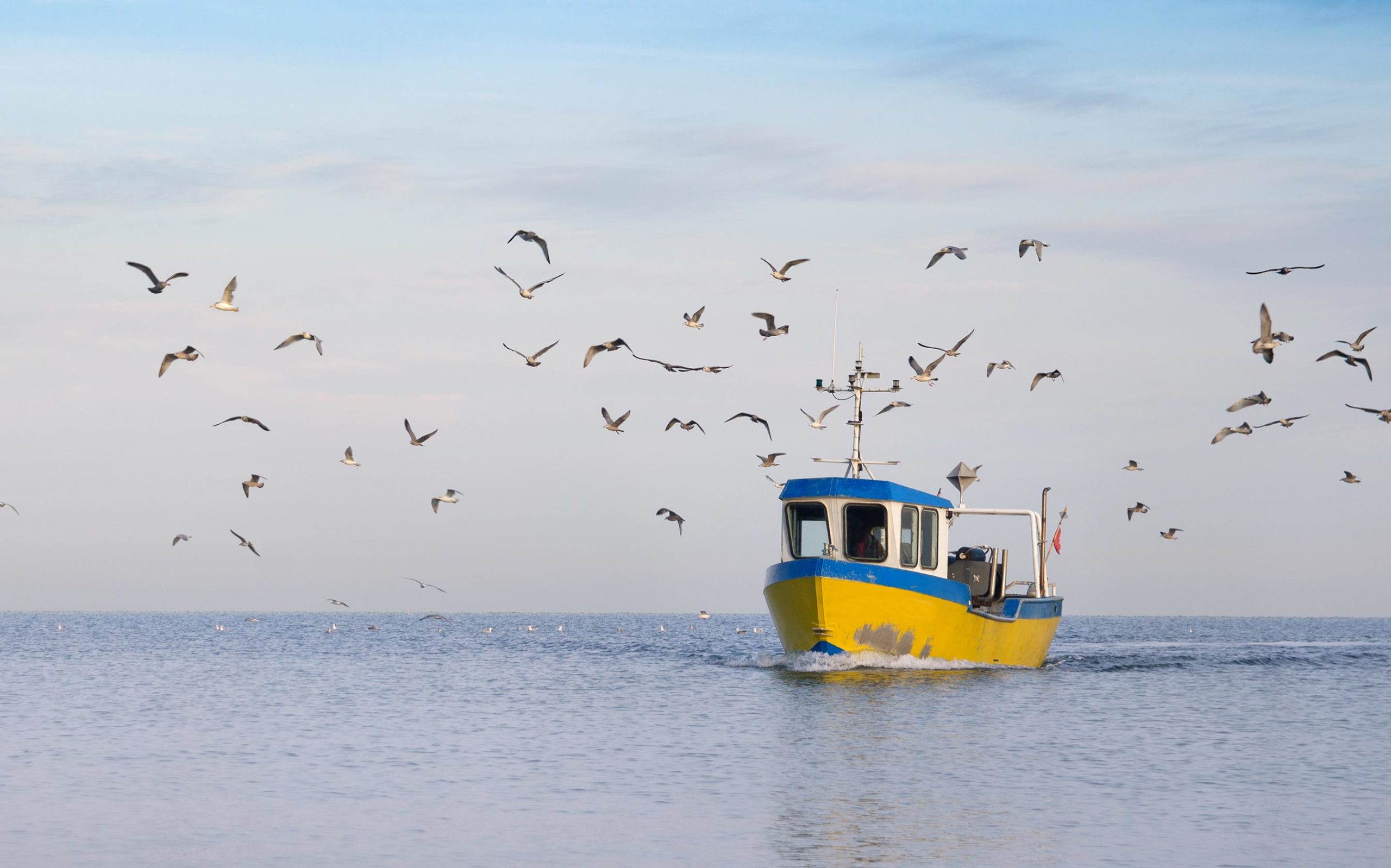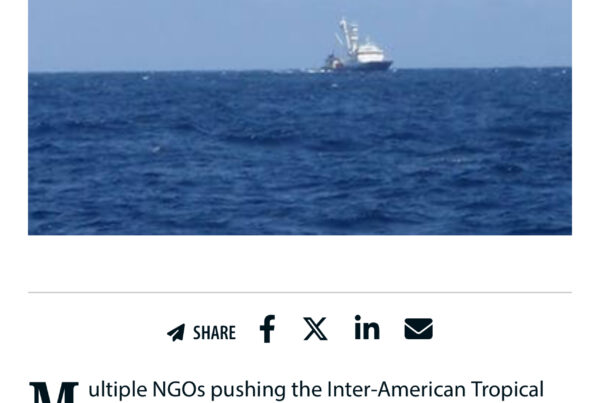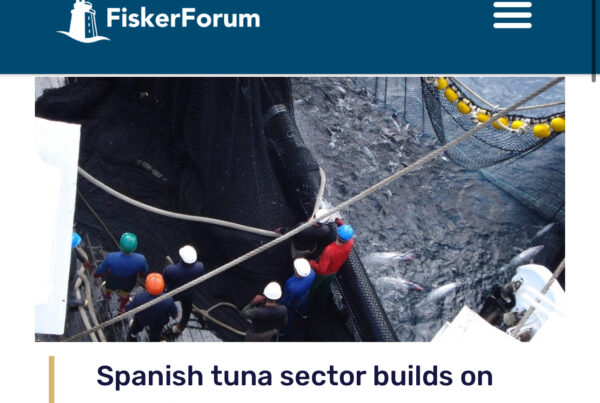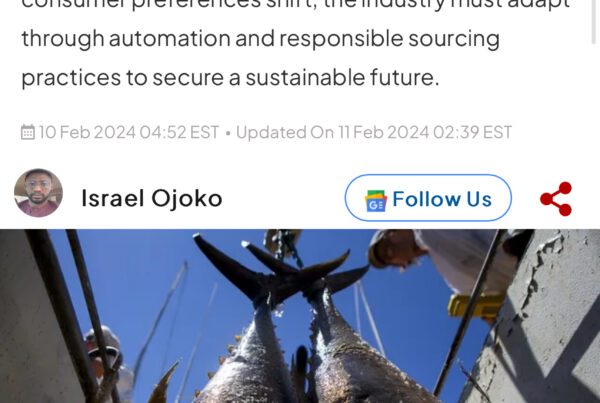MSC Raises the Bar For Certified Tuna Fisheries
New data published today by the Marine Stewardship Council (MSC) shows continued growth in tuna catch and products certified to its global standards for sustainable fishing.
MSC certified fisheries are now responsible for catching more than 2 million tonnes of tuna per year, making up close to half (47%) of the global wild commercial tuna harvest. As a result, the number of brands selling tuna with the MSC label now exceeds 430, up from 126 in 2015 as companies make good on commitments to source only certified sustainable tuna*.
The data, included in an update to the MSC’s Sustainable Tuna Handbook, shows growing momentum behind sustainable tuna certification and sales. Retailer, brand and fisheries commitments, coupled with growing consumer demand and advances in the technologies which allow sustainable fishing, are delivering tangible benefits. In the three years to March 2022, MSC certified tuna fisheries delivered on 38 conditions of certification helping to further safeguard the oceans and fish stocks. Continue reading here (Source: Marine Stewardship Council).
MSC-Certified Tuna Now At Almost Half of Global Catch Levels
New data from the Marine Stewardship Council has revealed that fisheries certified as sustainable are now responsible for catching more than two million tonnes of tuna per year.
MSC-certified fisheries now make up close to half (47%) of the global wild commercial tuna harvest while more than 430 brands sell certified tuna, up from 126 in 2015.
The data included in the MSC’s updated Sustainable Tuna Handbook showed a “growing momentum” behind sustainable tuna certification and sales. Continue reading here (Source: The Grocer).
Costa Rica Finally Passes Tuna Reform Law
After three years of being bounced around between two sets of representatives from congress, the Tuna reform law finally became law. There are two parts of the law which are important to the sport fishing sector.
First is moving the tuna purse seine boats further offshore. The old law permitted them to work just 12 miles from the coast and a Presidential decree in 2014 moved them out to 45 miles. The problem with a Presidential decree is it could be changed at any time whereas a law can only be changed with a new law which is a more difficult process.
The new law requires the tuna seiners to be at least 80 miles from shore. This is great news for both recreational and commercial fishermen. The incidental bycatch of the tuna nets includes many species important to both sectors including marlin, sailfish, dorado and wahoo. It also includes sharks, manta rays, turtles and dolphins as well as the demise of nearly 100 other species to catch one fish to take to market, tuna. Continue reading here (Source: The Tico Times).
PNG Takes Part In Tuna Trade Summit
PNG participates in the 17th annual Infofish world tuna conference and exhibition held in Bangkok, Thailand.
Minister for Fisheries and Marine resources Jelta Wong, delegation from the Special Economic Zone Authority, managing director for National Fisheries Authority as well as strategic counterparts and representative from an array of industries all centered around onshore infrastructure development and investment.
Mr Wong re-enforced the need for governments and the global industry participants to work together in addressing a number of global agenda such as the LIN Sustainable Goal 14 – Life below water and related blue economic development aspirations, let alone global concerns on illegal unreported and unregulated fishing practices word wide. Continue reading here (Source: Post Courier).
Global Seafood Trade Facing Challenges After Strong Post-COVID Rebound
Already firmly established as the world’s most-traded animal protein, with commerce valued at 3.6 times the size of beef, five time that of pork, and eight times greater than poultry, the global seafood trade flow added a further USD 13 billion (EUR 13.4 billion) to its value in 2021, climbing to a new high of USD 164 billion (EUR 169 billion), according to the latest industry report compiled by Rabobank.
According to the Dutch multinational banking and financial services company’s “Global Seafood Trade: The Decade’s Winners Grow in Influence,” released 13 October, premium aquaculture – in particular salmon and shrimp – has been a driving force behind this growth. Continue reading here (Source: SeafoodSOurce).
US, Federated States of Micronesia Sign Expanded Shiprider Agreement
To overcome complex challenges to maritime enforcement in the Federated States of Micronesia (FSM), a nation with over six hundred islands, representatives of the United States and the FSM signed an expanded shiprider agreement on Oct. 13, 2022, during a Joint Committee Meeting hosted by Joint Region Marianas.
Through remote coordination, this agreement, the first of its kind, will enable the U.S. to act on behalf of the country to combat illicit maritime activity when an FSM law enforcement officer is not present. More specifically, the agreement provides a coordinating mechanism and process for U.S. law enforcement personnel to work with the FSM National Police through command centers to receive approval from the FSM to act. Continue reading here (Source: US Indo-Pacific Command).
Global Fishing Watch Welcomes Partnership with Papua New Guinea to Share Vessel Tracking Data
In a newly established partnership with Global Fishing Watch, Papua New Guinea has committed to sharing vessel tracking data from its Fishing Industry Association on the organization’s public map. Through this agreement, the Pacific island country is taking action to enhance the monitoring of fishing vessels operating in their waters and increase the transparency of its seafood supply chain.
A memorandum of understanding outlining the partnership was signed between Global Fishing Watch and the National Fisheries Authority on Oct. 11, 2022 at the 17th Infofish World Tuna Trade Conference and Exhibition in Bangkok. The agreement was reviewed and endorsed by all members of the Fishing Industry Association and is a testament to Papua New Guinea’s commitment to increasing accountability across the fishing sector and their desire to effectively manage fisheries and marine resources for sustainable and equitable benefits.
The newly available vessel monitoring system data will complement the already-existing automatic identification system, or AIS, data that appears on Global Fishing Watch’s map. This additional layer of information will help strengthen vessel compliance and aid in the sustainable use of marine resources, and highlights industry’s appreciation for the role transparency plays in building trust with their customers. Continue reading here (Source: Global Fishing Watch).



